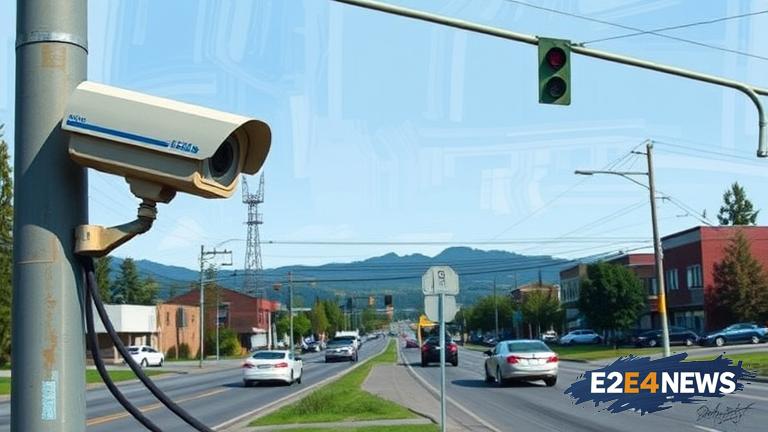The city of Portland, Oregon, has made headlines by removing its speed cameras, a decision that has sparked intense debate among residents, law enforcement, and road safety advocates. The move is seen as a significant shift in the city’s approach to traffic management, with proponents arguing that the cameras disproportionately targeted low-income and minority communities. According to city officials, the revenue generated from speed cameras was not being distributed equitably, with a significant portion going towards funding the program itself rather than supporting local community initiatives. Critics, however, argue that the removal of speed cameras will lead to an increase in speeding and accidents, compromising road safety. The decision has also raised concerns among law enforcement, who claim that speed cameras were an effective tool in reducing speeding and promoting safe driving practices. Despite these concerns, the city has opted to explore alternative methods of traffic management, including increased police presence and improved road infrastructure. The removal of speed cameras is part of a broader effort by the city to reexamine its approach to public safety and revenue generation. Proponents of the decision argue that it will help to build trust between law enforcement and the community, particularly in neighborhoods where residents felt unfairly targeted by speed cameras. However, others argue that the move is a misguided attempt to address social equity issues, and that speed cameras were a necessary tool in promoting road safety. The debate has sparked a wider conversation about the role of technology in traffic management and the need for more nuanced approaches to addressing social equity concerns. As the city moves forward with its new approach, residents and stakeholders will be closely watching to see the impact on road safety and revenue generation. The decision has also raised questions about the potential for other cities to follow suit, and whether the removal of speed cameras will become a trend in progressive urban planning. In the meantime, the city will be monitoring the effects of the decision and exploring new strategies for promoting safe driving practices and generating revenue. The removal of speed cameras is a significant development in the ongoing conversation about traffic management and social equity, and its impact will be closely watched by cities and towns across the country. The city’s decision has also sparked a discussion about the potential for alternative forms of traffic management, such as increased investment in public transportation and pedestrian-friendly infrastructure. While some have praised the city’s willingness to rethink its approach to traffic management, others have expressed concerns about the potential consequences for road safety. As the debate continues, one thing is clear: the removal of speed cameras in Portland, Oregon, has sparked a national conversation about the role of technology in traffic management and the need for more nuanced approaches to addressing social equity concerns. The city’s decision has also highlighted the need for more research and data on the effectiveness of speed cameras in promoting road safety and reducing accidents. In the coming months and years, the city will be working to develop new strategies for promoting safe driving practices and generating revenue, and the impact of the decision will be closely watched by stakeholders and residents alike. The removal of speed cameras is a complex issue, with both proponents and critics presenting compelling arguments. Ultimately, the decision will depend on a careful consideration of the potential benefits and drawbacks, as well as a commitment to ongoing evaluation and improvement. The city’s approach to traffic management will continue to evolve in the coming years, and the removal of speed cameras is just one part of a broader effort to promote safe and equitable transportation practices. The decision has also sparked a conversation about the potential for technology to play a role in promoting road safety, and the need for more innovative approaches to traffic management. As the city moves forward, it will be important to consider the potential benefits and drawbacks of different approaches, and to prioritize strategies that promote safe, equitable, and sustainable transportation practices.
